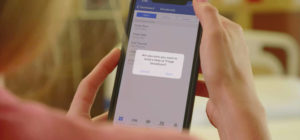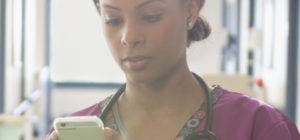Have you thanked your nurses lately? The World Health Organization (WHO) suggests you should—not just today or this week, but all year long. In fact, the WHO has designated 2020 as the International Year of the Nurse and the Midwife in order to recognize those on the frontlines of care delivery—and also to draw attention to the growing demand for more of them across the globe: By 2030, WHO estimates a worldwide shortage of about 9 million nurses and midwives.
These global trends have a place right here in the United States, too: Within the next two years, about 500,000 nurses will retire, leaving more RN job openings than any other occupation.
As hospitals ramp up their hiring to close these labor gaps in an industry already reckoning with burnout, they’ll be competing for good talent—and those that can demonstrably prove they support nurses are more likely to hire and keep them happy.
Many factors go into creating a supportive environment that nurses want to be a part of, but increasingly, technology tops that list. By implementing tools that support and enable nurses in everything they do, including nursing communication, your organization can be fully supportive of its nursing staff.
Nursing Communication Has Come a Long Way
Nurses have always relied on an excessive number of methods to connect with other staff and providers for the good of patient care—starting with manual standbys in the 1800s. Back then, Florence Nightingale put in motion nursing communication by documenting infection control protocols at a hospital for the British army during the Crimean War.
Things have evolved significantly since, from paper trails and chalkboards to the emergence of technology, notably pagers, in the 1950s. And though clinicians still cling to pagers even today, hospitals have for decades seen increasing demand for two-way communication systems that are more agile and nimble than a phoneline—systems that go wherever nurses do, and don’t encumber them with administrative red tape, distractions or device overload.
That brings us to the year of the nurse, in an era when mobile advancements have helped improve the impact nurses make on care delivery so that they can return time to care, where they’re most needed.
Communication in the Year of the Nurse
These developments in clinical communication and collaboration technology include capabilities the entire enterprise can leverage, including real-time, patient-centric care team information, instantaneous alerting and patient updates directly to a single app on the smartphone.
Providing a platform that allows for these capabilities and more means that nurses can communicate and collaborate across disciplines, right from the patient’s bedside. Nurses need to interact and collaborate with so many colleagues across any and every discipline in the organization—supporting nurses with CC&C technology means providing that tool to all employees, both clinical and ancillary, so they can reach anyone at any time.
A flexible, purpose-built CC&C solution is also a great way to boost patient engagement. See if your vendor will integrate with your nurse call or call bell system to reduce response times and increase patient satisfaction.
The Single-Device Impact on Nursing Communication
We’ve seen the pain points first-hand: We know how frustrating it can be chasing unit secretaries, lugging around workstations or toggling back and forth between various communication tools and systems.
Alternatively, we know how big of an impact a single mobile solution can make if deployed well, and how much time (31 seconds fewer for nurse call response times) and steps (down 38 percent) it can save in a single shift. And all of this while improving collaboration on patient care.
That’s why in the year of the nurse—and every year—we’re proud to engineer technologies that benefit, rather than burden, nurses everywhere. After all, there are so precious few of them, and they deserve support for everything they do. Thank you, nurses!





